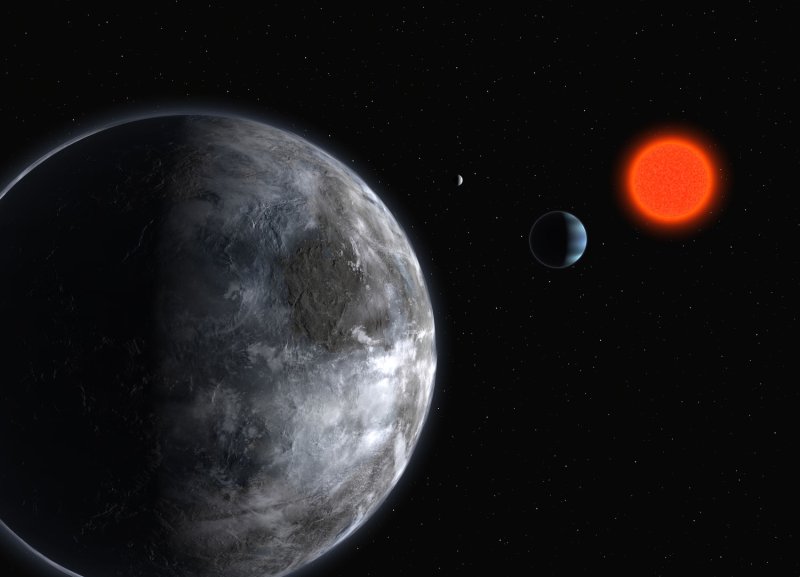Astronomers have discovered the most Earth-like planet outside our Solar System, pictured in an artist's rendering, an exo-planet with a radius only 50 percent larger than the Earth and capable of having liquid water, announced by the Eupropean Southern Observatory on April 25, 2007. Using the ESO 3.6-m telescope, a team of Swiss, French and Portuguese scientists discovered the planet about 5 times the mass of the Earth that orbits a red dwarf, already known to harbor a Neptune-mass planet. (UPI Photo/European Southern Observatory) |
License Photo
Mankind's knowledge of planets, limited for most of human history to our own Earth and its solar system neighbors, has exploded in the last 20 years with the discovery of hundreds of exo-planets in the cosmos, a search with the ultimate goal of finding an Earthly twin that could harbor some form of life.
For most of history the only planets (from the Greek for "wandering star") known were those visible to the naked eye as they moved -- or "wandered" -- against the background of stars.
With the invention of the telescope the number of planets in our solar system was fixed at nine, now reduced to eight (apologies, Pluto, for being redesignated a "dwarf").
Then in 1992, the first "extra-solar" planets were detected around a pulsar, followed in 1995 by the detection of the first planet orbiting a main-sequence star, a giant planet circling 51 Pegasi.
What followed was an explosion of discovery, with the number of confirmed exo-planets now at 760.
Most have been giant planets, so-called "hot Jupiters," since their size makes them easier to detect, but astronomers say they believe they are in fact outnumbered by more Earth-like "rocky" planets in the universe.
If there's an ultimate goal in the search for exo-planets, it would be a rocky, Earth-like planet orbiting in its star's "habitable zone," where liquid water, considered a prerequisite for life, could exist.
In February, astronomers announced the best candidate yet for such a planet, a world orbiting in the habitable zone of the star GJ 667C.
The planet, dubbed GJ 667Cc, is about 4.5 times as massive as earth, a class astronomers have dubbed super-Earths.
"It's the Holy Grail of exo-planet research to find a planet around a star orbiting at the right distance so it's not too close where it would lose all its water [would] boil away and not too far where it would all freeze," Steven Vogt, an astronomer at the University of California, Santa Cruz, said of GJ 667Cc. "It's right smack in the habitable zone -- there's no question or discussion about it. It's not on the edge. It's right in there."
The discovery means potentially habitable alien worlds could exist in more environments than previously thought possible, astronomers said.
"Statistics tell us we shouldn't have found something this quickly this soon unless there're a lot of them out there," Vogt said. "This tells us there must be an awful lot of these planets out there."
The main instrument in the ongoing search for exo-planets is NASA's Kepler space telescope, launched in 2009 and named for the 17th-century German astronomer Johannes Kepler.
An instrument on the Kepler telescope monitors the brightness of more than 145,000 stars, transmitting the data back to Earth where it is analyzed for signs of solar "transits," brief periodic dimming of stars caused by exo-planets crossing in front of them as they orbit.
Kepler trails the Earth in orbit around the sun at a distance of more than 30 million miles as it turns its sensor array to the universe in its ongoing search for exo-planets.
It currently has identified more than 2,300 exo-planet "candidates," some of which, when confirmed, will certainly swell the population of known exo-planets from the 760 figure.
And will one of them be the long-sought twin of Earth? No one can be sure, but the search will surely go on.















